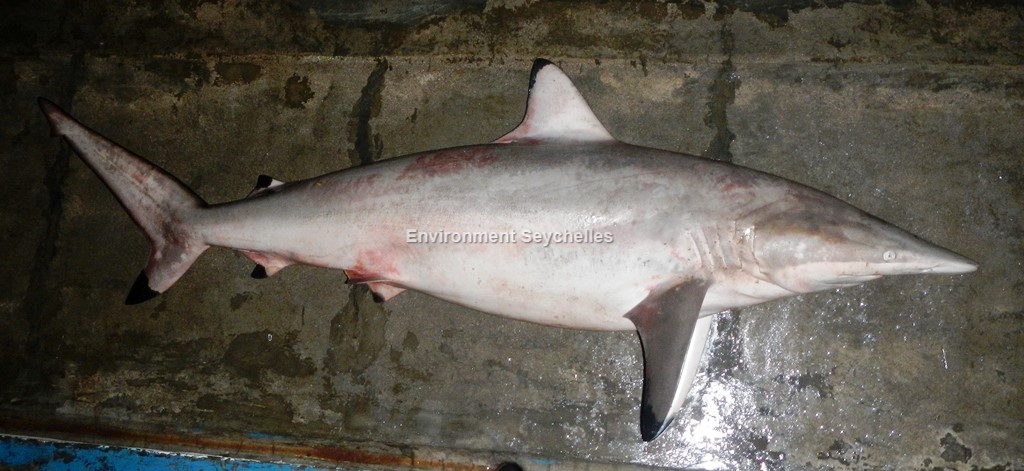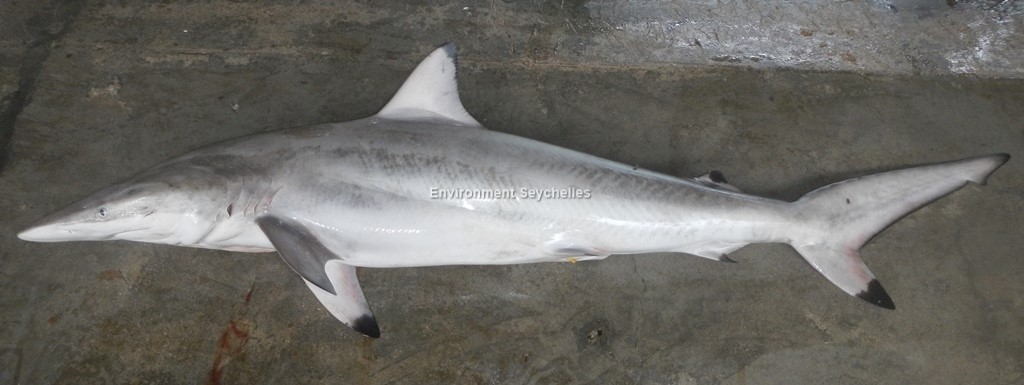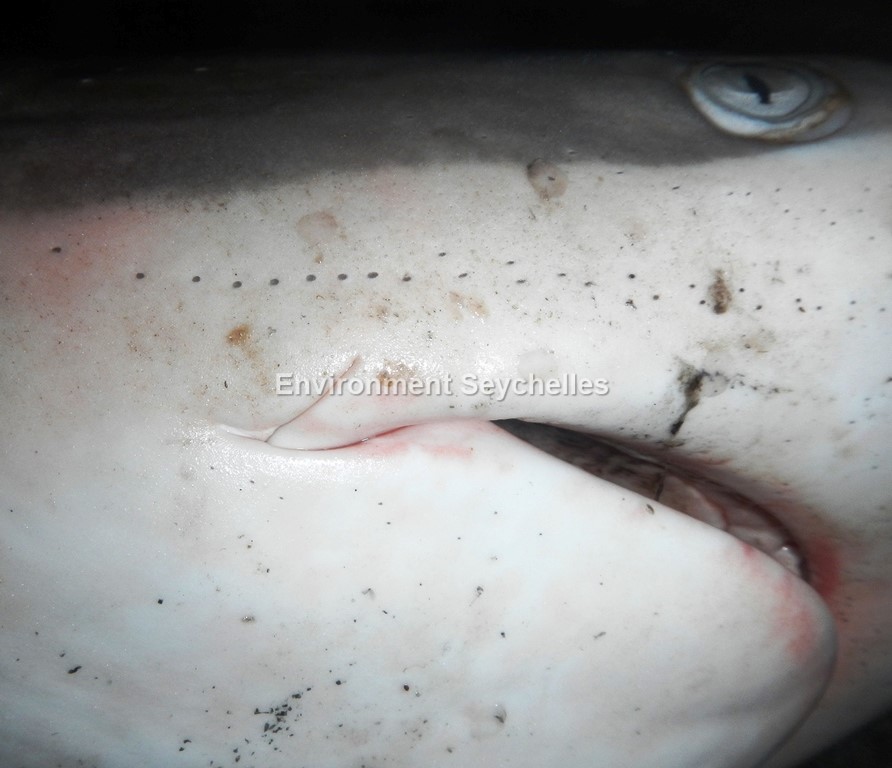Description:
Large yet relatively slender-bodied shark with grey back, white stomach and prominent black tips on some fins (young juveniles may lack fin markings).
White flank stripe has variable prominence.
Fins: D1 small and falcate with narrow black tip or edge and short rear tip. Origin on or behind rear tips of pectorals. D2 Black-tipped with short
rear tip. No interdorsal ridge. Pectoral fins short, narrow, falcate and black tipped. Anal fin and lower caudal lobe black-tipped. Pelvic fins
usually plain.
Head: Long narrow, pointed snout, small circular eyes, short relatively inconspicuous anterior nasal flaps. Prominent long upper labial furrow,
– longer than any other Carcharhinus spp. Long gill slits.
Size:
Born 60-85cm TL. Mature: Male 160-205cm TL, Female 170-200 cm, Maximum 278cm TL.
Habitat and Ecology:
Coastal-pelagic shark of insular and continental shelves. Feeds on teleosts, rays and cephalopods. Viviparous 3-15 pups per litter with a 2-year
reproductive cycle. Has an unusual habit of leaping from the water, rotating as many as three times and falling back in the water, usually on its back.
Often found in schools of large numbers.
In Seychelles mature specimens of this species are rare in the artisanal catch whereas juveniles and sub-adults are relative common. This suggests
that adults remain in deeper water off the Mahé plateau and only come onto the plateau to pup.
Fishery Status:
This species is not protected. It is however illegal to fish for sharks with nets (Fisheries Act, Reg 16.c). It is subject to hook and line, short
anchored long line and illegal net fishing. Juveniles and sub-adults are a relatively common catch in the artisanal fishery.
Notes:
Differentiation from C. limbatus can be problematic due to variations in colouration of both species. Key distinguishing characteristics are the
respective shapes of the D1 fin, the short pectoral fins and the long upper labial furrow of C. brevipinna.
The Creole name “nennen pwent” is also applied to C. limbatus and C. sorrah as in general the fishers do not distinguish between the three species
References:
Ebert, D.A. et al (2013). Sharks of the World – A fully illustrated guide. Wild Nature press ISBN 978-0-9573946-0-5
Fisheries Act 2014. Prohibition of net fishing of sharks, Reg. 16c of 1st August 1998. (Carried over from the 1986 Fisheries Act as per Fisheries Act 2014 para 79: Savings and Transitional provisions).
Froese, R. and D. Pauly. Eds. (2018). FishBase. https://www.fishbase.se/summary/Carcharhinus-brevipinna (26/05/19).
Nevill, J.E.G. et al (2015). An identification guide for the sharks of the Seychelles Artisanal Fishery.
Rigby, C.L. et al (2020). Carcharhinus brevipinna. The IUCN Red List 2020: e.T39368A2908817. https://dx.doi.org/10.2305/IUCN.UK.2020-3.RLTS.T39368A2908817.en. (06/08/21).
Citation:
Nevill, J.E.G. (2019). Carcharhinus brevipinna, Spinner shark. Seychelles Seatizens. www.seatizens.sc. https://seatizens.sc/species/carcharhinus-brevipinna-muller-henle-1839/ (Updated 06/08/21).




This article had me hooked! For those curious, here’s more: DISCOVER MORE. What are your thoughts?
I like this web site it’s a master piece! Glad I discovered this ohttps://69v.topn google.Blog monry